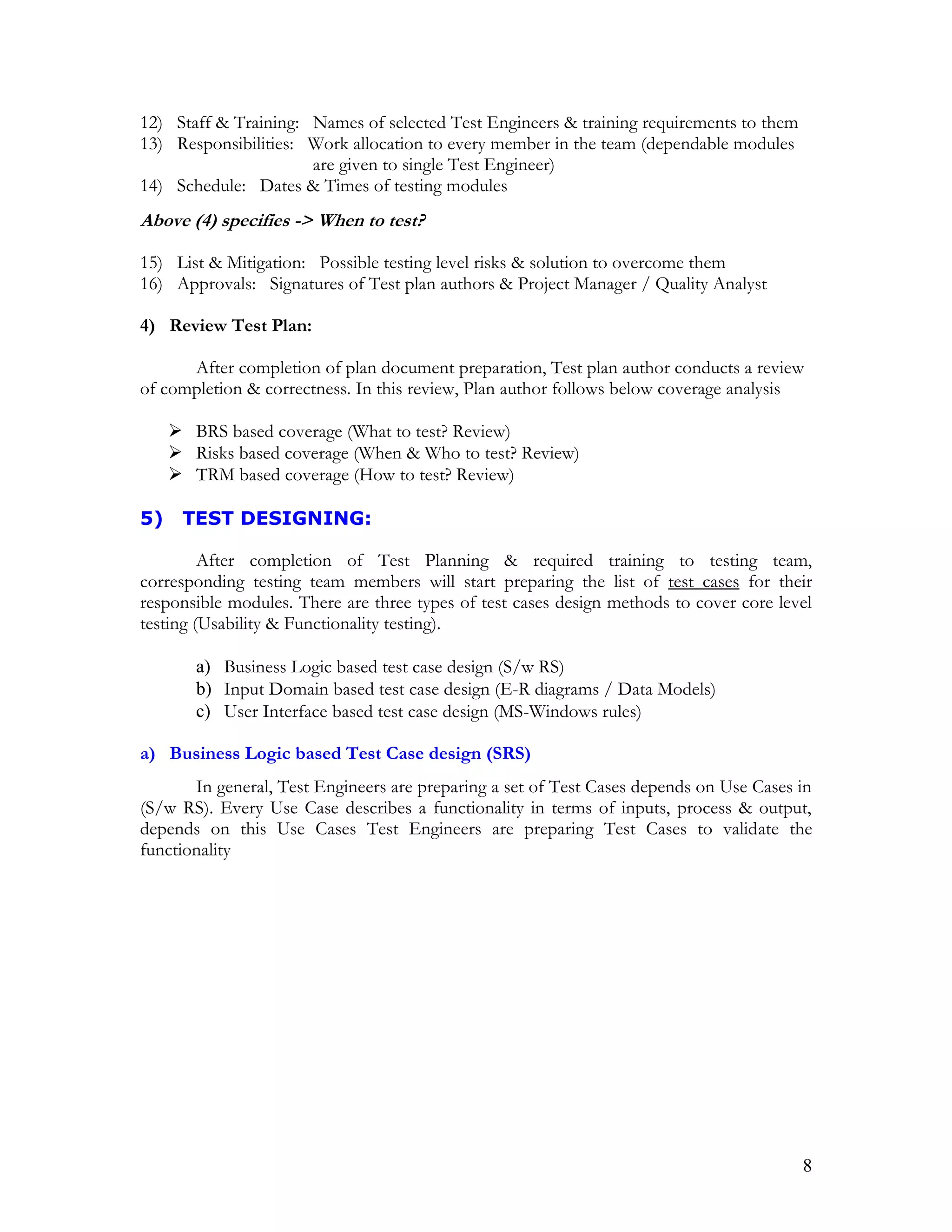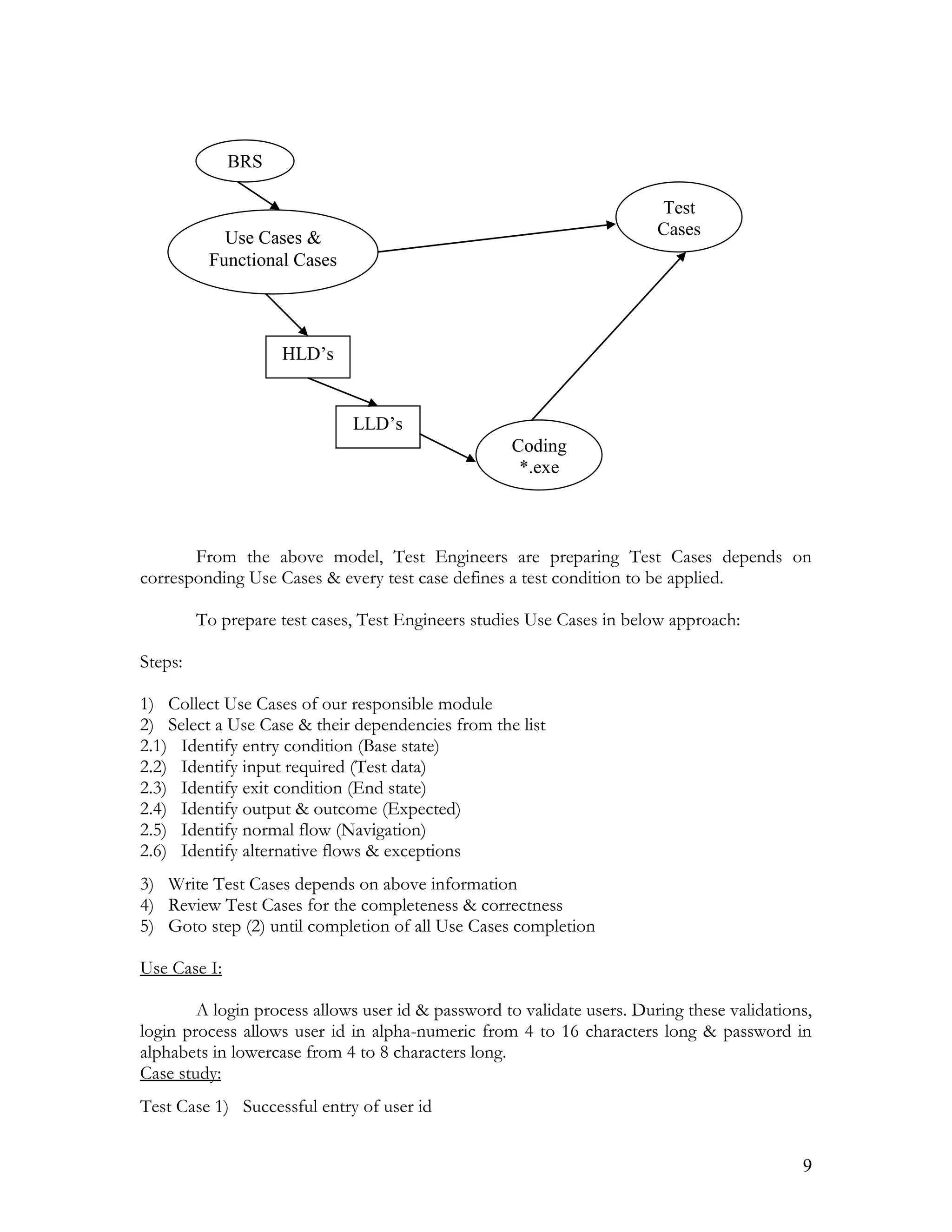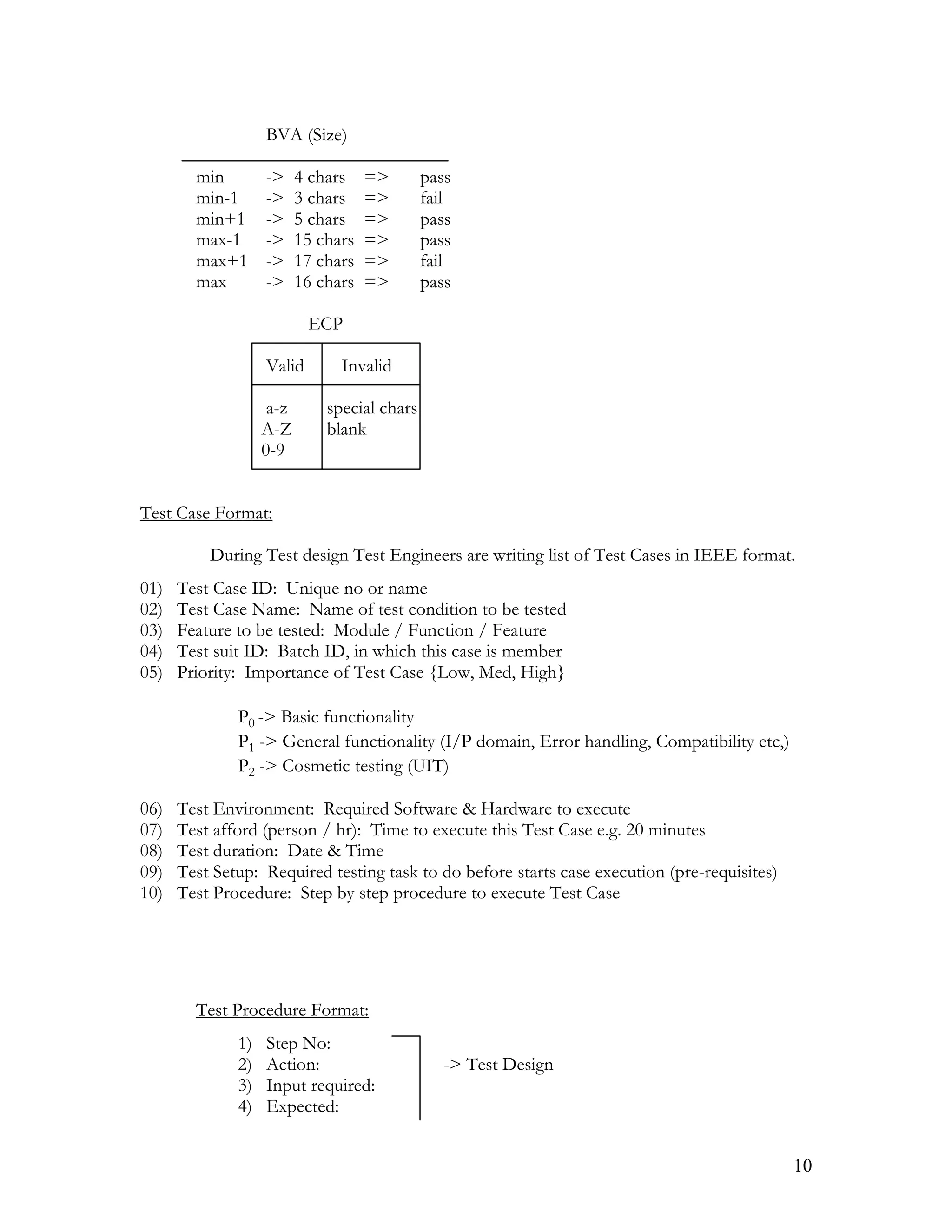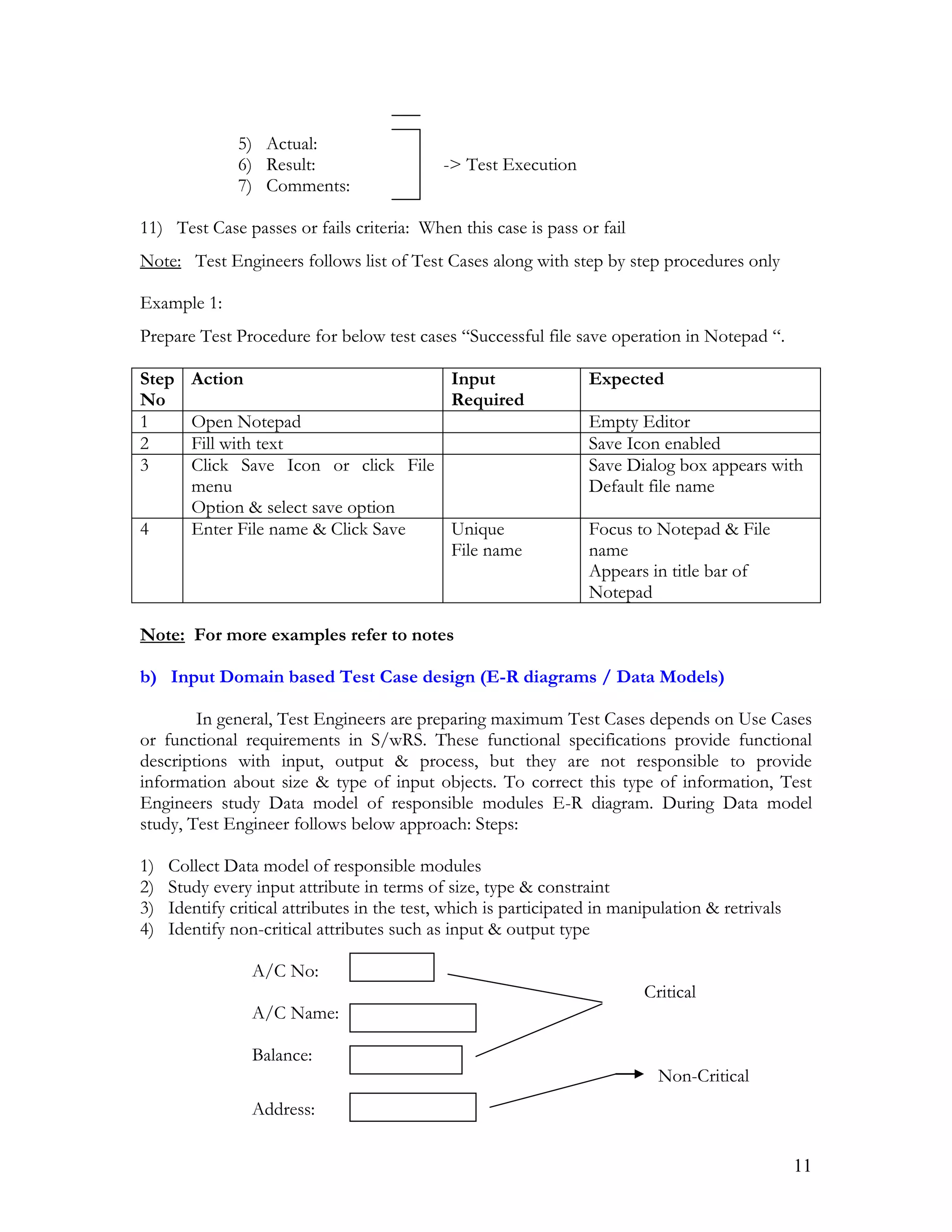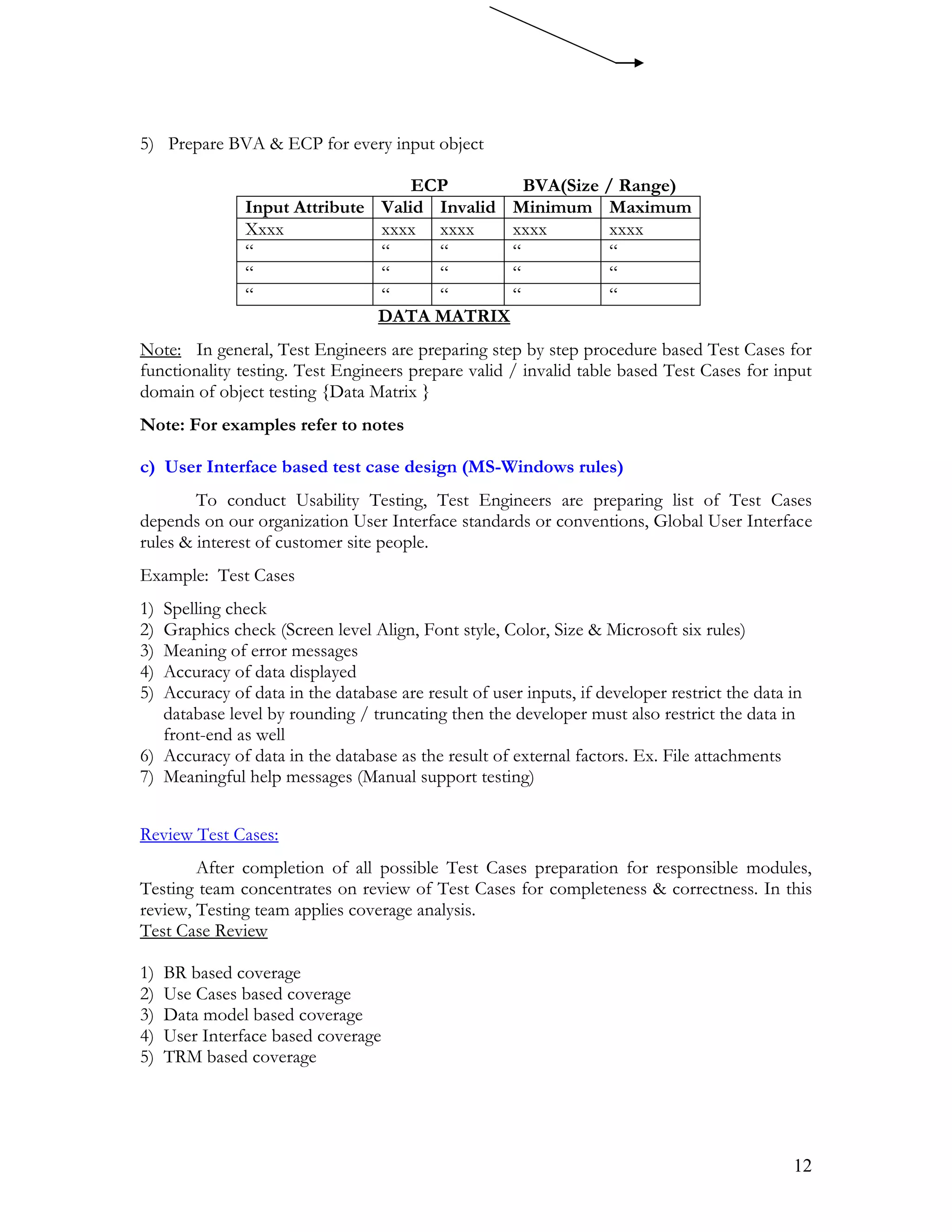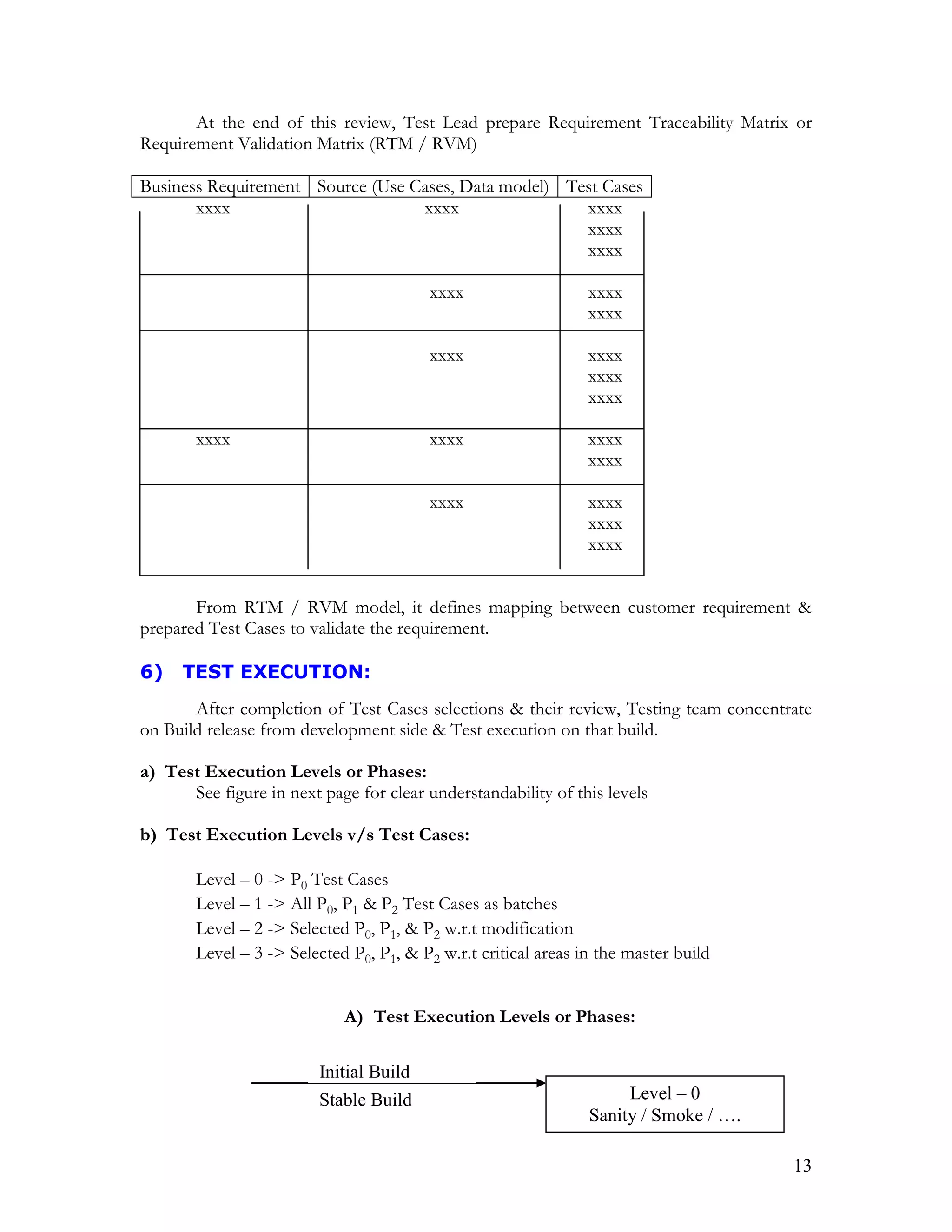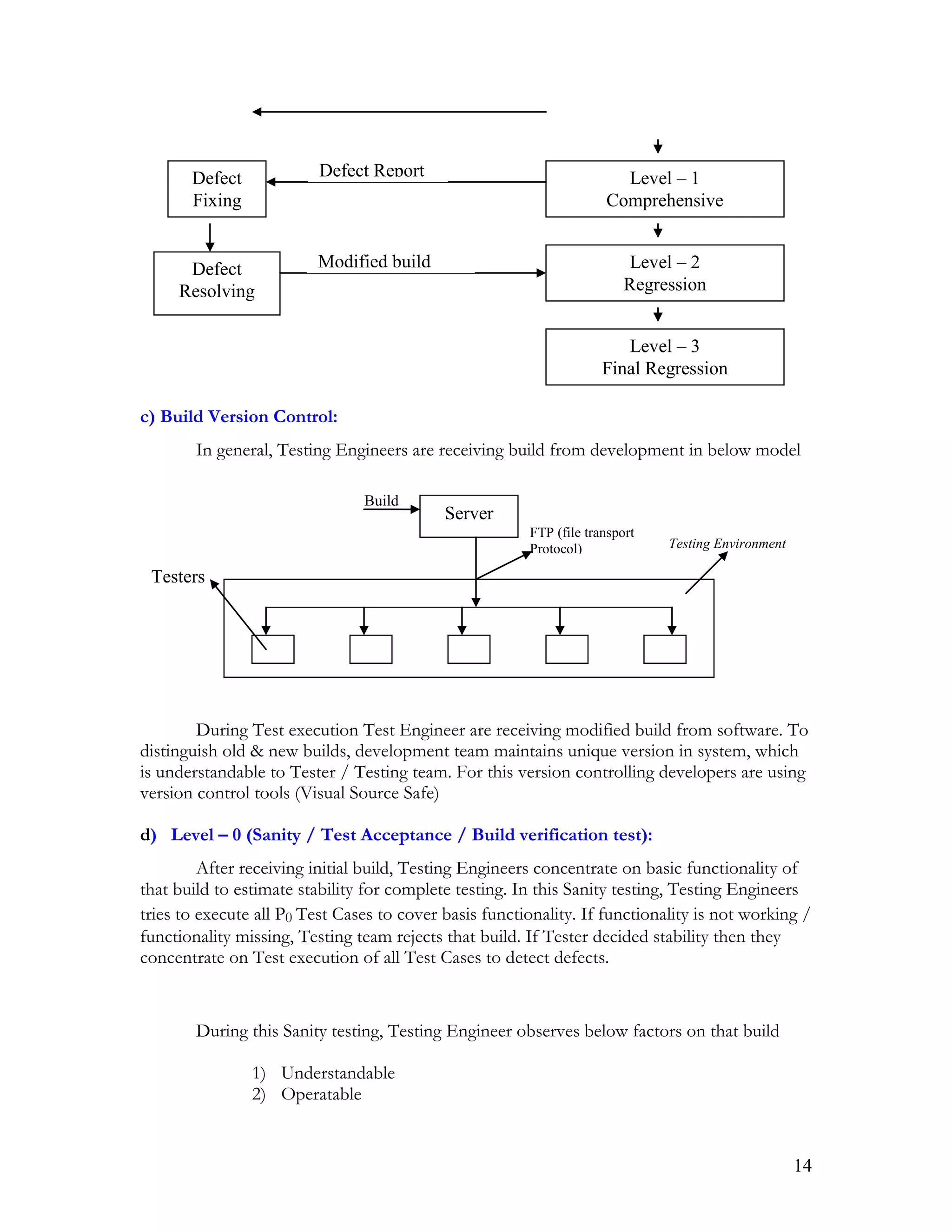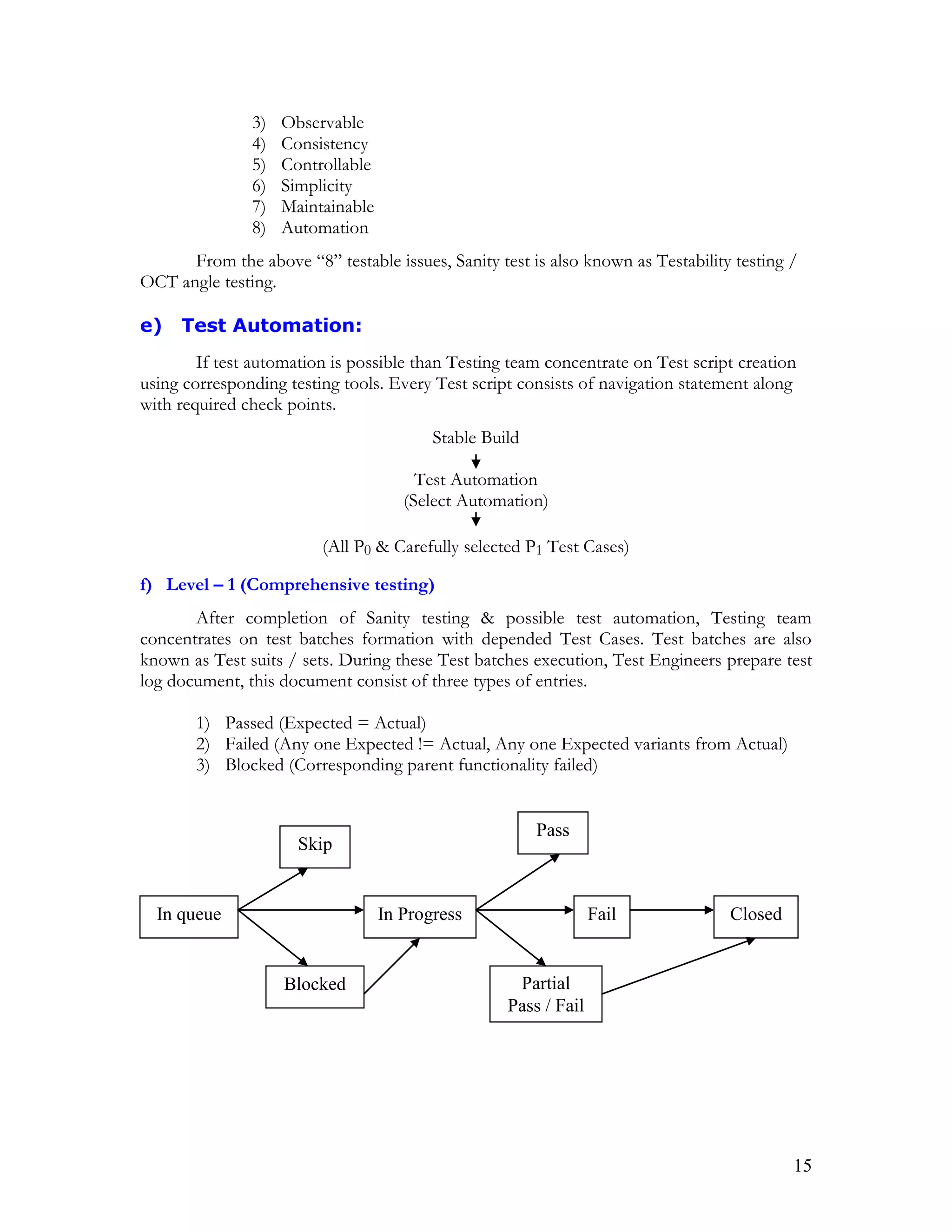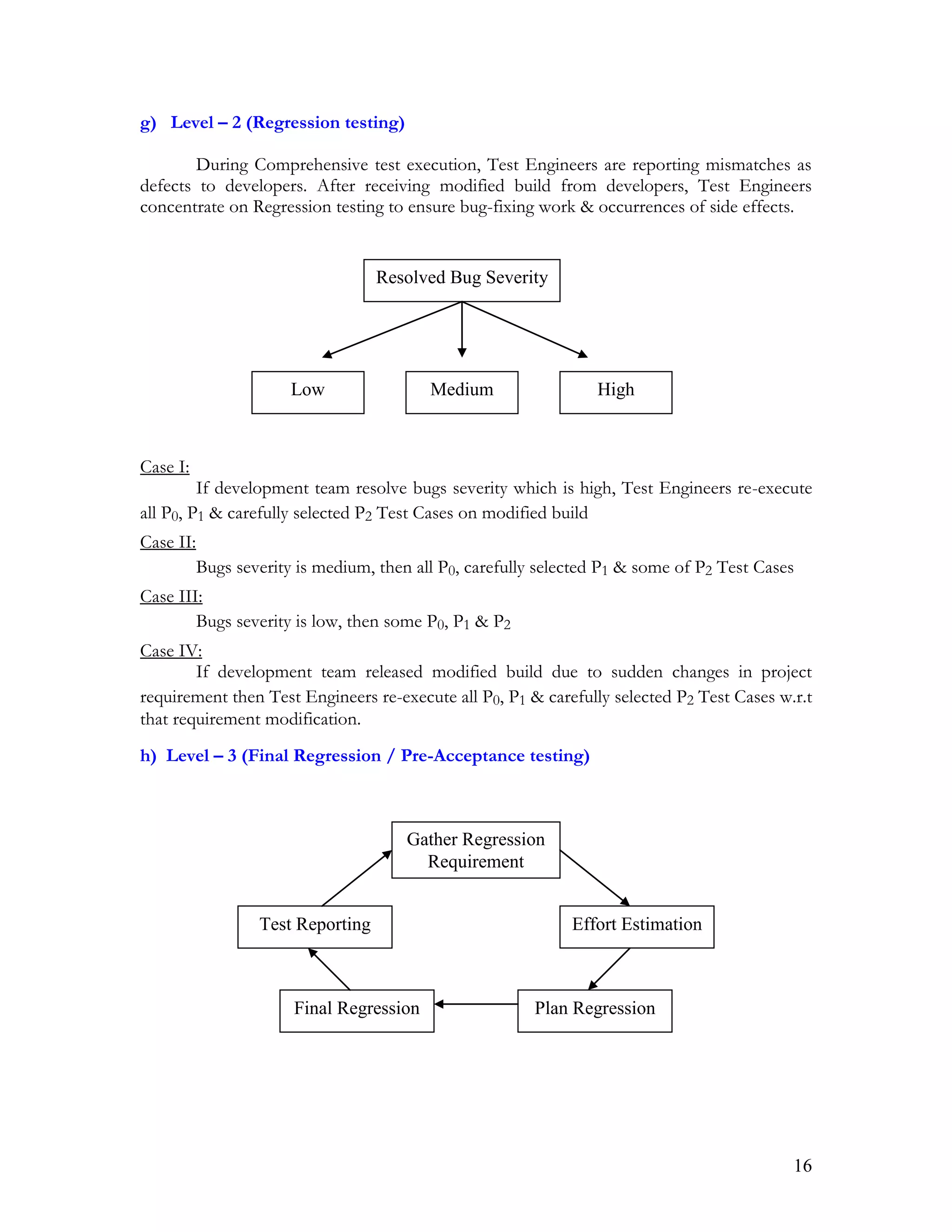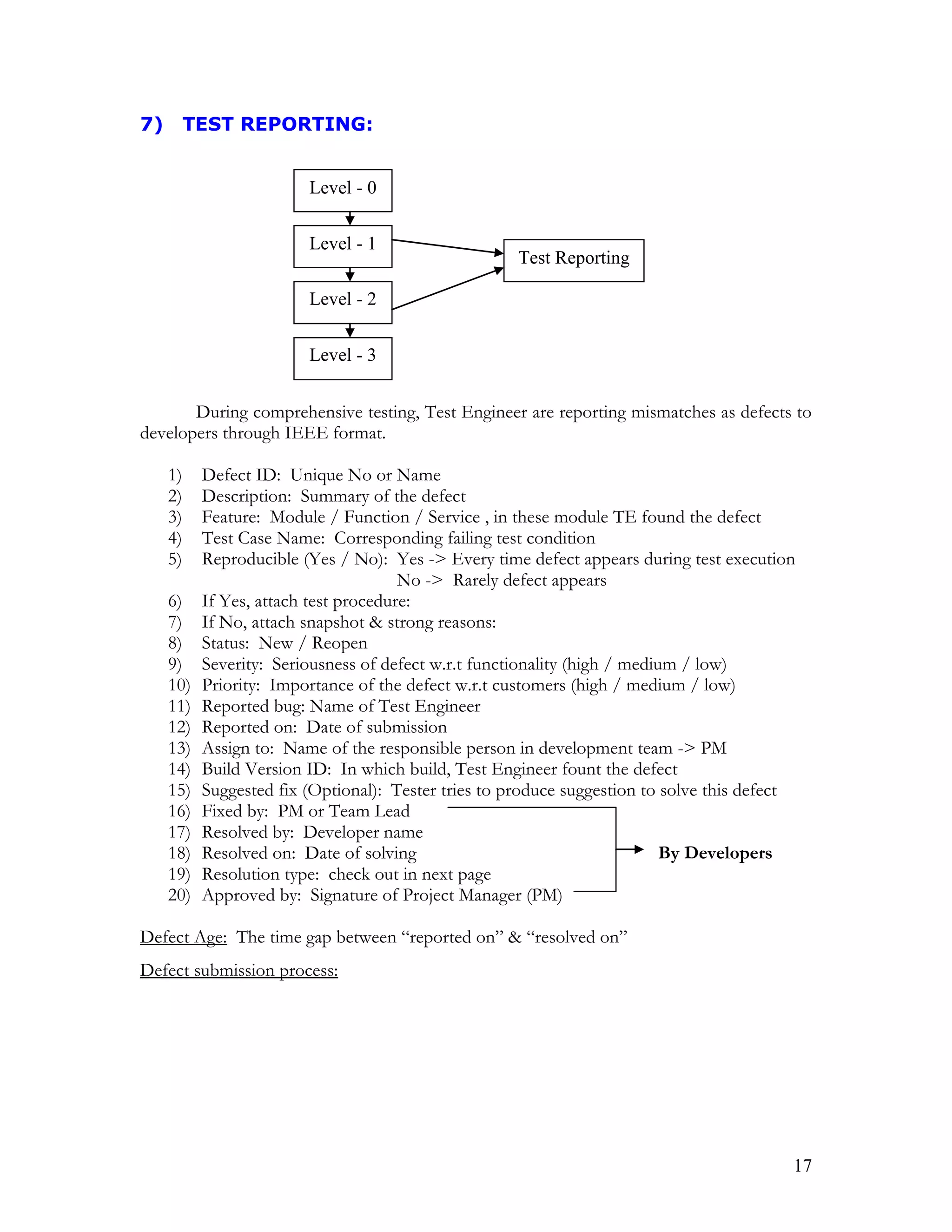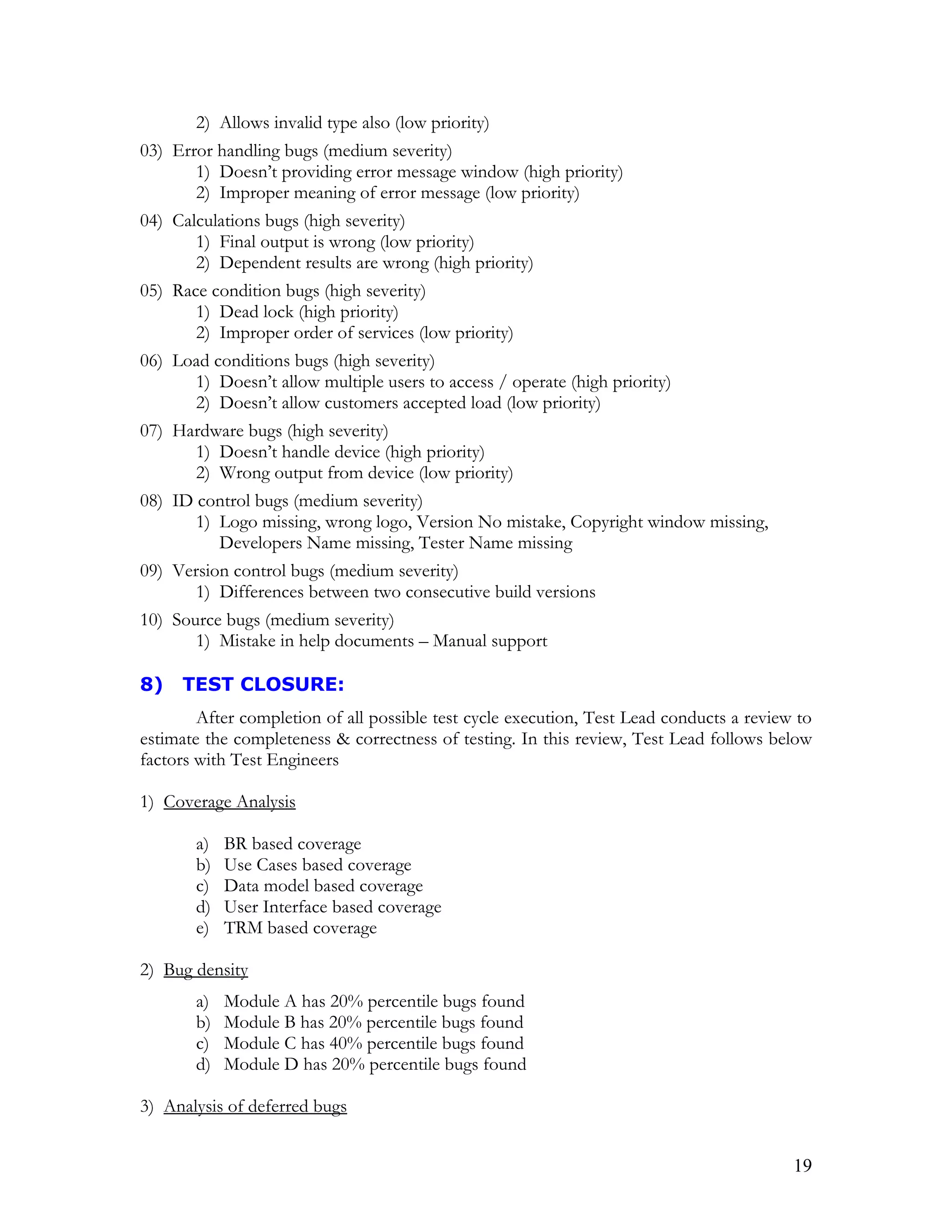1. The document describes various testing documents created at different levels of a project testing process. Test policy, strategy, and methodology documents are created at higher levels, while test plans, cases, procedures, scripts, and reports are created at the project level.
2. It provides details on different testing documents - test policy defines testing objectives, test strategy defines the testing approach, and test methodology provides the testing approach for a specific project. It also describes how test plans are created, test cases are designed based on requirements, and the different levels of test execution.
3. The key testing documents created are test policy, strategy, methodology, plan, cases, procedures, scripts, and reports. Test cases are designed based
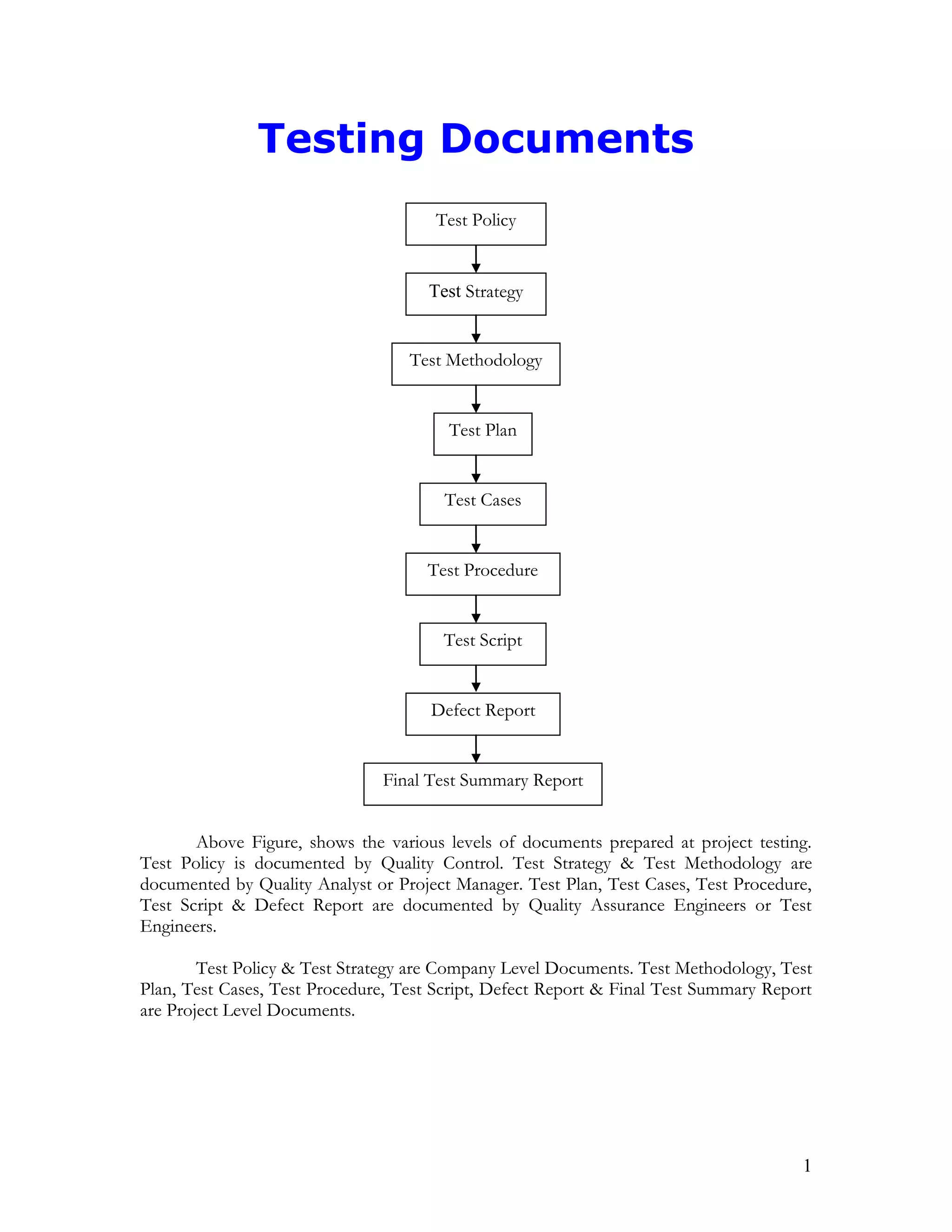
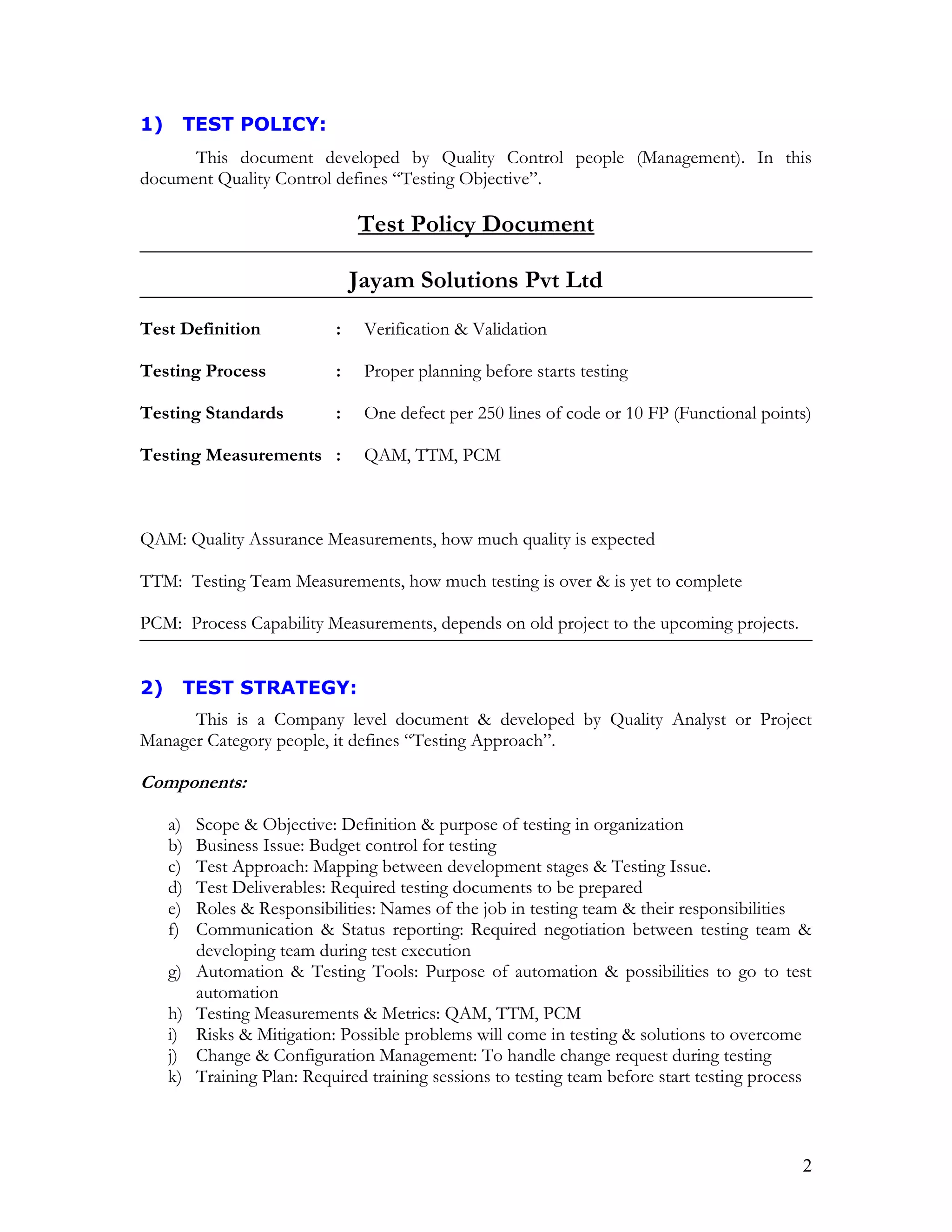
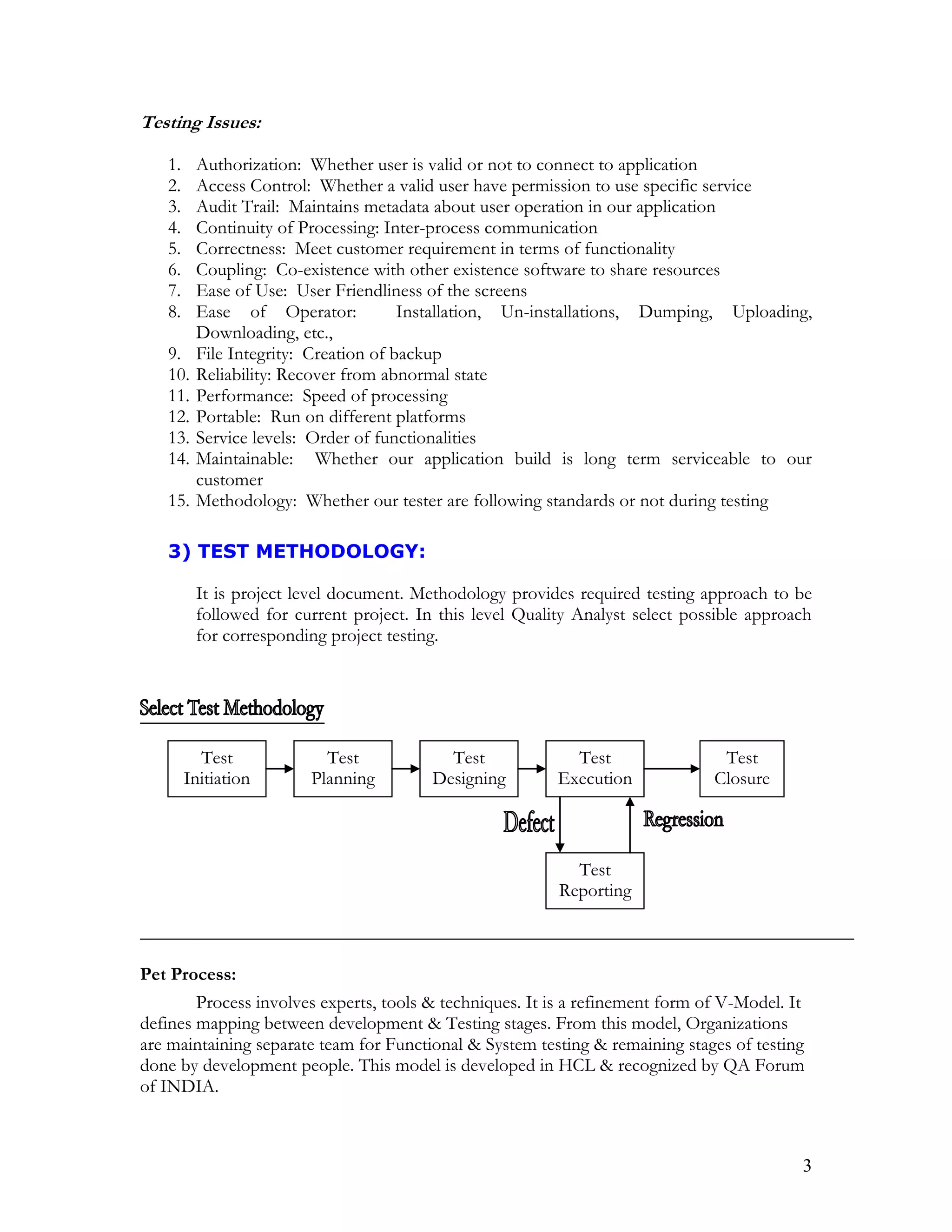
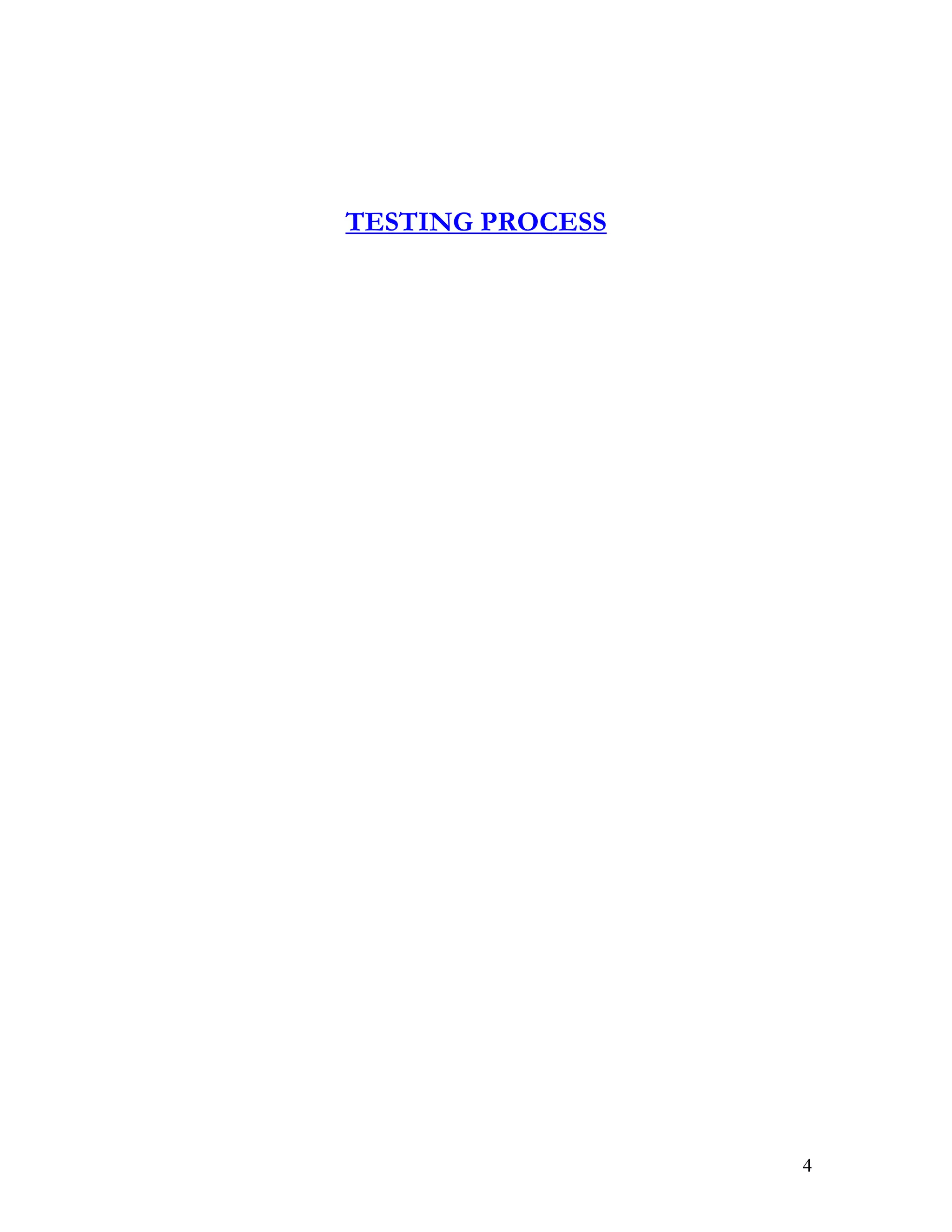
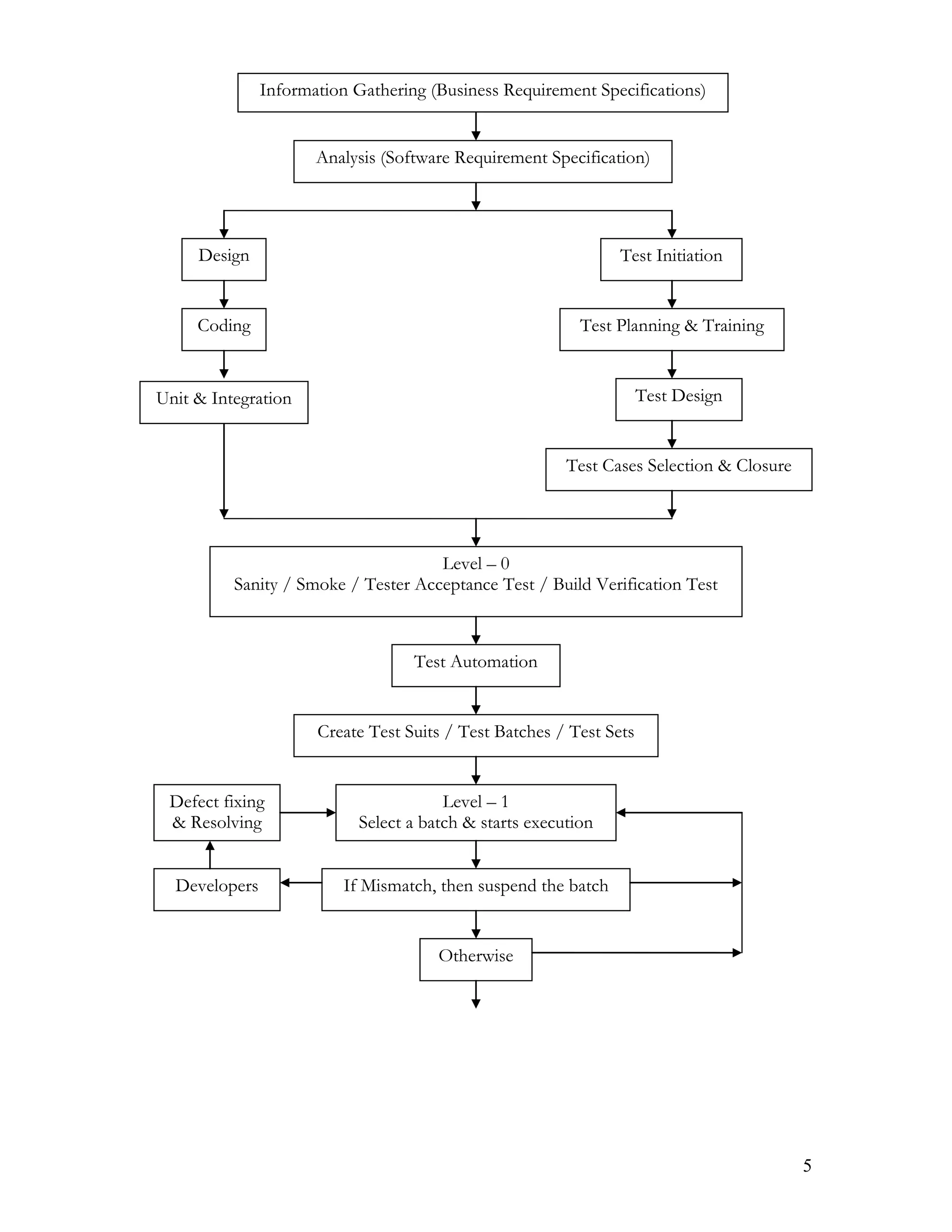
![6
4) TEST PLANNING:
After finalization of possible test for current project, Test Lead category people
concentration on test plan document preparation to define work allocation in terms of What,
Who, When & How to test. To prepare test plan document, test plan order follows below
approach;
1] Team Formation:
In general, Test planning process starts with testing team formation. To define a
testing team, test plan author depends on below factors;
1. Availability of testers
2. Test duration
3. Availability of test environment resource
2] Identify Tactical Risk:
After Testing team formation Plan author analysis possible & mitigation (ad hoc
testing)
# Risk 1: Lack of knowledge of Test Engineer on that domain
# Soln
1: Extra training to Test Engineers
1. Team Formation
2. Identify Tactical Risks
3. Prepare Test Plan
4. Review Test Plan
Development
document
Test Responsible
Matrix
System Test Plan
Level – 3
Final Regression / Releasing Testing / Pre-Acceptance / Post-Mortem testing
User Acceptance Testing
Sign Off
Test Closure](https://image.slidesharecdn.com/testingdocuments-jayam-130617031613-phpapp02/75/Testing-documents-6-2048.jpg)
![7
# Risk 2: Lack of Resource
# Risk 3: Lack of budget {less no of time}
# Soln
3: Increase Team size
# Risk 4: Lack of Test data
# Soln
4: Conduct test on past experience basis i.e., ad hoc testing or contact client for data
# Risk 5: Lack of developer process rigor
# Soln
5: Report to Test Lead for further communication between test & development PM
# Risk 6: Delay of modified build delivery
# Soln
6: Extra hours of work is needed
# Risk 7: Lack of communication in between Test Engineer - > Test team and
Test team - > Development team
3] PREPARE TEST PLAN:
After completion of testing team formation & Risk analysis, Test plan author
concentrate on Test Plan Document in IEEE format.
01) Test Plan ID: Unique No or Name e.g. STP-ATM
02) Introduction: About Project description
03) Test Items: Modules / Functions / Services / Features / etc.
04) Features to be tested: Responsible Modules for Test design (preparing test cases for
added modules)
05) Features not to be tested: Which feature is not to be tested and Why? (Due to test
cases available for the old modules, so for these modules no
need to be tested / no test case
Above (3), (4) & (5) decides which module to be tested – > What to test?
06) Approach: List of selected testing techniques to be applied on above specified
modules in reference to the TRM(Test Responsible Matrix).
07) Feature pass or fail criteria: When a feature is pass or fail description
(Environment is good) (After testing conclusion)
08) Suspension criteria: Possible abnormal situations rose during above features testing
(Environment is not good) (During testing conclusion)
09) Test Environment: Required software & Hardware to be tested on above features
10) Test Deliverables: Required testing document to be prepared (during testing, the type
of documents are prepared by tester)
11) Testing Task: Necessary tasks to do before start every feature testing
Above (6) to (11) specifies -> How to test?](https://image.slidesharecdn.com/testingdocuments-jayam-130617031613-phpapp02/75/Testing-documents-7-2048.jpg)
